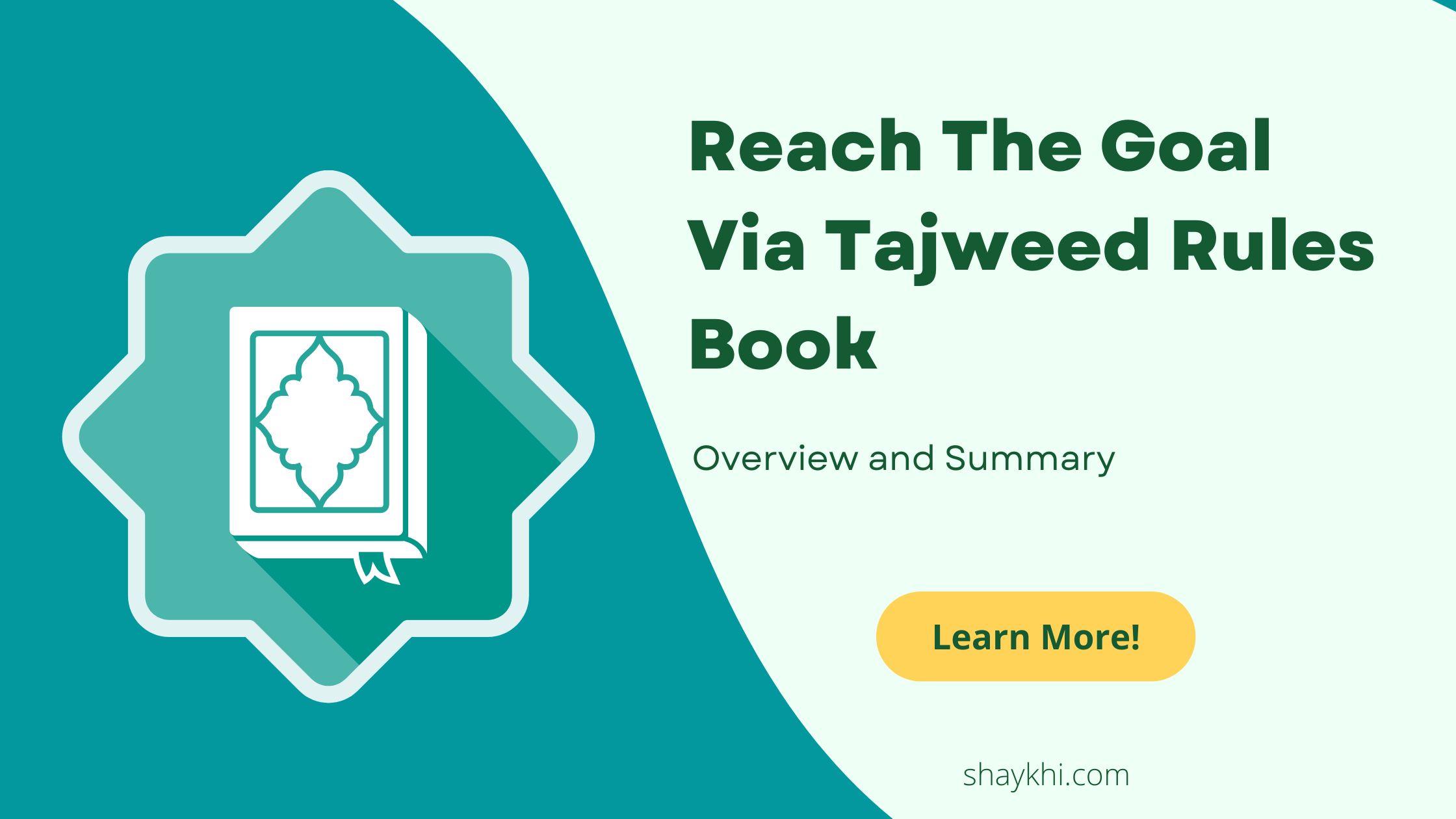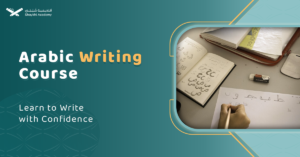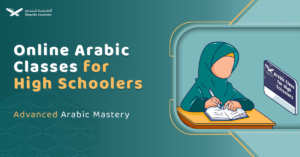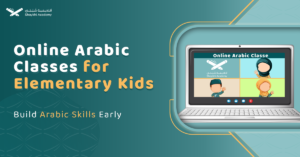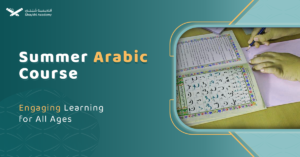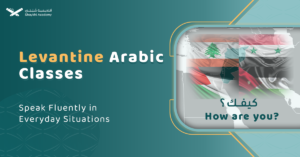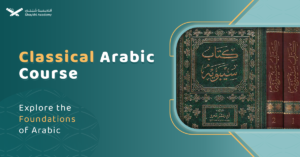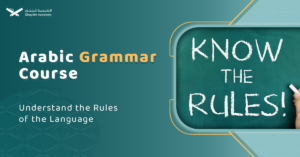“Reach the Goal via Tajweed Rules” is a Tajweed book written by Maha Rashed. This 49-page book is suitable for introducing Tajweed teachers and beginners to the science of Tajweed in a simple and practical way.
In this article, we provide an overview of this Tajweed book, highlighting its main topics and reviewing its strengths and weaknesses to help Tajweed learners make the best use of it in their educational journey.
Reach The Goal Via Tajweed Rules: Book Introduction
To begin with, the book starts by defining Tajweed as outlined by early Tajweed scholars. The author then provides a brief history of Tajweed, emphasizing the changes in Muslim tongues due to the spread of Islam and the passage of time, leading to the necessity for scholars to establish rules. This evolution made learning Tajweed an obligation for all Muslims, including Arabs, to properly read and study the Quran. While the importance of Tajweed is widely accepted, the ruling that it is an individual obligation by consensus may seem overly restrictive.
Following this, the book offers practical tips for learning Tajweed, starting with the recommendation to find a qualified Quran teacher to listen to your recitation. The final part of the introduction discusses the benefits of learning Tajweed, citing various Prophetic sayings that underscore the virtue of learning the Quran. Although these sayings do imply the importance of Tajweed, the presentation may overlook their primary focus on understanding and practicing the Quranic messages. Consequently, there is a risk of overemphasizing Tajweed as a means at the expense of the higher objectives of learning the Quranic messages.
Brief On The Book Topics
The book briefly discusses the main Tajweed rules necessary for proper Quranic recitation:
1. Noon And Meem Mushaddad:
The book begins with the rules for noon and meem mushaddad, where the reader must do Ghunnah (nasal sound) of two beats on it.
2. Alqalqalah:
After that, the book presents a brief overview of the rule of alQalqalah, which is later discussed in detail with the qualities of letters.
3. Heavy And Light Letters:
The book then addresses the pronunciation of heavy and light letters in all their possible cases.
4. Rules Of Noon Sakinah & Meem Sakinah:
The author also explains the rules of noon sakinah and tanween, as well as meem sakinah, in a practical way by comparing their pronounced forms to their written forms.
5. Madd Rules:
Additionally, it provides a detailed explanation of madd cases identifying madd letters and leen letters in all their cases of different beats.
6. How To Stop At The End Of Words:
The lesson of how to stop at the end of words is a significant lesson for beginners. It illustrates how to stop at the words ending with tanween fathah or any other type of tanween, taa mabootah, a mushaddad letter, and sakin (non-voweled) letter or a letter with madd.
7. Qualities Of Letters:
The book concludes with a comprehensive explanation of the qualities of letters;
- Qualities with opposites
- Qualities without opposites
To sum up, the book provides a simple guide for the basic Tajweed rules necessary for beginners; mushaddad letters, rules of noon and meem sakinah, qualities of letters, madd rules, qalqalah and how to stop at the end of words.
Strengths Of The Book
“Reach the Goal via Tajweed Rules” boasts several advantages that make it one of the best Tajweed books available in English. Here are some key strengths:
1. Simple Explanation:
The book offers straightforward explanations of the rules without unnecessary theoretical opinions.
2. Illustrative Diagrams:
It features clear and comprehensive diagrams to illustrate the rules.
3. Practical Explanation for Tanween Shapes:
The book includes tanween shapes for different rules in the Uthmani drawing of the Mushaf, along with a “how to pronounce” section for some rules, aiding learners in distinguishing between various Tajweed rules, even if they forget the theoretical details.
4. Effective Coverage for rules of Stopping at Words’ Ends:
The book uniquely addresses the lesson of stopping at the end of words, making it particularly helpful for non-Arabic speakers to learn how to pause on different words in an easy and practical way. However, it misses the distinction between closed and open taa for the same words in wasl, with the different pronunciation rules for waqf based on the taa shape, such as in “امرأت” and “امرأة.
Thus, using this straightforward book provides numerous advantages, making it a suitable starting point for your journey with Tajweed.
Weaknesses of the book
Although the book excels in covering the technical aspects of Tajweed, it falls short in linking this science to its higher objective of understanding the meanings. Here are key weaknesses to consider:
1. Overemphasis on Tajweed Rulings:
Stating all Tajweed rules as obligatory can be particularly challenging for those who struggle with Arabic pronunciation. This emphasis may hinder learners from progressing to understanding and reflecting on the meanings. Many scholars differentiate Tajweed rulings, making the obligation only for maintaining correct pronunciation without altering meanings, harakaat, or main qualities of the letters while considering other rules as recommended practices.
For more about the ruling of learning Quran with tajweed and using it in recitation in prayers refer to these articles:
- Reading the Quran with Tajweed: Is Reading the Quran without Tajweed Wrong and Haram?
- Is Tajweed Obligatory In Salah?
2. Overlooking the Quranic Higher Objective:
The book’s title suggests it will highlight the significance of understanding and practicing the Quran’s meanings. However, it only briefly mentions this critical issue. For instance, the introduction references Prophet Muhammad’s (PBUH) recitation as evidence of Tajweed’s importance without discussing the real motive behind such recitation, which is to help reflect on the meanings for easier implementation in life.
3. Superficial Explanation for Insufficient Dealing with the Quran:
The book attributes insufficient engagement with the Quran to ignorance of Tajweed and the Arabic language. While understanding Tajweed and Arabic is ideal for comprehending and conveying the Quran, this view may limit the learning process for Muslims living in the West. These Muslims can understand Quranic messages by reading translations. Although deeper understanding is recommended, it is not obligatory for all non-Arabic-speaking Muslims with different levels of capacity.
4. No Reference to Points of Articulation:
The book does not cover the points of articulation for different letters, which is an expected topic.
Overall, these weaknesses, primarily found in the introduction, reflect an approach that may distract from the Quran’s main goal of reforming Muslim generations through translating Quranic messages into real actions.
Start An Interactive Learning Tajweed Journey With Native Arabic Tutors
Shaykhi Academy is here to help you find a suitable track for learning tajweed by providing different courses presented by a group of native Arabic tutors. Here is an example of a real class as well as many Tajweed-related courses:
Why Choose Shaykhi Academy?
- Connect with highly qualified native tutors.
- Flexible scheduling to suit your busy lifestyle.
- Affordable classes tailored for all levels.
- Accessible from anywhere around the globe.
Discover Our Range of Courses:
- Arabic Noorani Qaida: Lay a solid foundation for Quranic studies.
- Online Quran Classes for Kids: Engaging lessons for lifelong learning.
- Tajweed Rules for Kids: Learn to recite with confidence.
- Quran Hifz for Kids: Step-by-step guidance to memorize the Quran.
- Quran for Adults: Introduce yourself to Quran reading and Tajweed rules.
- Online Arabic Courses: Master the language of the Quran.
- Islamic Studies: A wide range of topics related to Islam, including theology, law, Quranic studies, Hadith.
Don’t Miss Out on Your Chance to Excel!Whether you’re a beginner or seeking advanced knowledge, Shaykhi Academy can guide you! Book your free trial now

Conclusion
To conclude, “Reach the Goal via Tajweed Rules” is a suitable reference for beginner-level Tajweed learners due to its simple and concise coverage of important Tajweed rules. However, learners should be aware of its weaknesses and fill in the gaps by consulting other resources and a translation book for the meanings of the verses to ensure a balanced dealing with the Quran.
